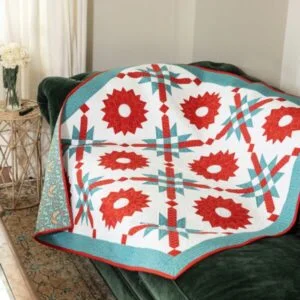If you’re looking for a fun and eco-friendly sewing project, this Basic Backpack Using “Old Jeans” tutorial is the perfect place to start. In this guide, we’ll walk you through the step-by-step process of turning a pair of worn-out jeans into a stylish, durable, and practical backpack. Using old jeans not only saves money, but it also contributes to a more sustainable lifestyle by giving new purpose to clothing that might otherwise be discarded.
The beauty of this project lies in its simplicity. Even if you’re a beginner at sewing, the steps are easy to follow and require minimal materials. All you need is a pair of old jeans, some basic sewing tools, and a bit of creativity. The end result is a basic backpack that’s both functional and fashionable, great for school, casual outings, or even as a gift.
Throughout this article, we’ll focus on how to maximize the fabric from your jeans, how to plan your cuts, and how to piece everything together into a backpack that’s as sturdy as it is stylish. Whether you’re motivated by sustainability, creativity, or necessity, this Basic Backpack Using “Old Jeans” tutorial will inspire you to see old clothes in a whole new way.

Materials You Will Need
Creating a Basic Backpack Using “Old Jeans” starts with gathering the right materials. Most of these are items you probably already have at home or can acquire easily.
You will need:
- One or two pairs of old jeans depending on size
- Scissors or a rotary cutter
- A sewing machine (or needle and strong thread if sewing by hand)
- Pins or fabric clips
- Measuring tape or ruler
- Lining fabric (optional but recommended for durability)
- Zippers or magnetic snaps
- Strap materials (use jean waistbands or webbing)
- Iron and ironing board
- Chalk or fabric marker
Cutting your jeans into usable pieces is the first important step. Start by cutting along the seams to maximize the flat areas of fabric. The legs usually provide the best material for the main body of your basic backpack.
The pockets and waistband of the jeans are incredibly useful. Front or back pockets can become external compartments for your backpack, while the waistband can be repurposed as part of the handle or straps. Recycling these elements not only adds character but saves you sewing time.
Don’t forget to wash and iron your jeans before starting. This removes dirt, evens out wrinkles, and makes it easier to cut and sew. Clean, pressed fabric is essential to creating a professional-looking Basic Backpack Using “Old Jeans”.
Cutting and Preparing the Fabric
Once your jeans are cleaned and ready, it’s time to start cutting the fabric pieces that will form your basic backpack. It’s helpful to create a simple paper pattern based on the size of the backpack you want to make.
Begin by marking and cutting two rectangles for the front and back panels of the backpack. These should be equal in size, approximately 16 inches high and 12 inches wide. Adjust the measurements based on your preference.
Next, cut two side panels and a bottom panel to form the depth of the bag. These can be about 4 inches wide and the same height as your main panels. These side pieces give the Basic Backpack Using “Old Jeans” a three-dimensional shape.
Use the jeans pockets creatively. You can place them on the outside of the backpack for easy access to small items like keys or phones. Cut around the original stitching and sew them onto the desired spots before assembling the main body.
Don’t forget to cut lining fabric to match the outer pieces if you want to add a smooth, durable inner layer. Lining not only strengthens the backpack but also hides raw seams and improves the finish.
Finally, cut strips for the straps. You can use leftover jean fabric, webbing, or the original waistband for this. Reinforce these strips well, especially if the backpack will carry heavier items.
Assembling the Backpack Body
With all your pieces ready, it’s time to bring your Basic Backpack Using “Old Jeans” to life by assembling the main structure. Begin by sewing the side panels to the front and back panels.
Align the edges carefully and sew with a strong straight stitch. Use a denim needle for thick fabric, and go slowly to ensure accuracy and prevent needle breakage. Reinforce the seams by sewing a second line or using a zigzag stitch.
Once the side panels are attached, sew the bottom panel in place. This part can be a little tricky, so take your time. Make sure the corners align and pin them in place before stitching.
After the outer shell is complete, assemble the lining in the same way. If you’re adding inner pockets, do so before sewing the lining panels together. Internal compartments make your basic backpack even more useful.
With both outer and inner parts done, place the lining inside the denim shell, wrong sides together. Fold the top edges inward and stitch them together neatly, creating a clean, polished opening.
Add a zipper or magnetic snap to the top opening for secure closure. If you’re installing a zipper, pin it in place and use a zipper foot on your sewing machine for a neat finish.
Creating and Attaching the Straps
Straps are essential to any Basic Backpack Using “Old Jeans”, and making them strong is crucial. You can use denim strips folded and stitched multiple times or purchase ready-made backpack straps.
Measure and cut your straps based on your height or preference. A good standard length is about 18–22 inches per strap. Make sure both straps are equal in size for balance.
Fold each strip in half lengthwise, sew the edges together, and turn them right side out. For extra padding, you can insert a strip of batting inside before stitching. This adds comfort for longer wear.
Reinforce the ends of the straps by sewing multiple lines or a box with an “X” through the middle. This is especially important for durability and safety, especially if the backpack will carry heavy items.
Attach the straps to the top and bottom of the backpack’s back panel. Double-check positioning to ensure even weight distribution. Sew securely through all layers.
If you want an extra carrying option, add a loop handle at the top of the backpack using a short strip of denim or the waistband. This makes it easy to carry the bag by hand or hang it on a hook.
Your Basic Backpack Using “Old Jeans” is now complete in structure! The final step is to test all stitches, closures, and straps to ensure the bag is fully functional and ready to use.
Finishing Touches and Customization
Now that your Basic Backpack Using “Old Jeans” is fully assembled, it’s time for finishing touches that make it truly yours. This is where creativity comes in!
You can add patches, embroidery, or iron-on designs to personalize your backpack. Using fun or meaningful patches gives your project extra character and turns it into a fashion statement.
Try mixing denim shades by using pieces from different jeans. A patchwork effect looks unique and stylish, adding depth to your basic backpack without much extra effort.
Add decorative stitches or contrasting thread for visible seams. This technique not only reinforces your seams but also creates a designer look for your upcycled backpack.
For added functionality, sew in elastic bands or mesh pockets inside. These keep items like water bottles, pens, or cables organized and within reach.
If you plan to use the backpack for electronics, consider adding some internal padding or compartments using felt or foam. This protects your devices while maintaining a soft and lightweight bag.
Lastly, give your Basic Backpack Using “Old Jeans” a thorough final check. Snip any loose threads, iron the bag gently, and admire your work. You’ve turned old denim into something useful, stylish, and eco-conscious!
FAQ – Basic Backpack Using “Old Jeans”
Can I make a backpack using just one pair of jeans?
Yes, but it depends on the size of the jeans and the backpack. For a small to medium backpack, one adult-sized pair should be enough.
Do I need a sewing machine to make this backpack?
A sewing machine is recommended for speed and strength, but hand sewing is possible with patience and a strong needle.
What type of jeans work best for this project?
Sturdy denim without too much stretch works best. Avoid overly thin or worn-out areas that may rip easily.
Can I wash the backpack after it’s done?
Yes, but wash it gently. Use cold water and avoid harsh spin cycles to preserve stitching and shape.
How do I add more compartments to the backpack?
Use leftover pocket pieces or add zippered pouches inside and outside. Plan ahead before assembling the main structure.
Can kids use a backpack made from jeans?
Absolutely! Just adjust the size and strap length to fit children comfortably. It’s a great upcycle project for kids’ school supplies.
Conclusion
In this Basic Backpack Using “Old Jeans” tutorial, we walked through how to turn old denim into a functional and stylish backpack from start to finish. You learned how to cut, assemble, sew, and customize each part, transforming discarded fabric into something practical and fun.
This project not only teaches valuable sewing skills but also promotes sustainability and creativity. Every backpack tells a story—yours can start with a pair of jeans that had a second chance.
We’d love to hear your thoughts! If you tried this tutorial, please leave a sincere opinion and suggestions to help others improve their creations too.



